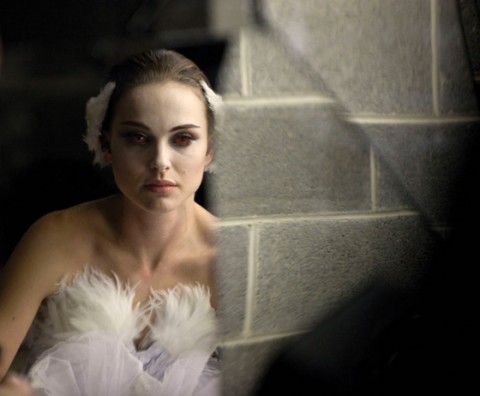Black Swan

Director Darren Aronofsky performs a psychological pas de deux with composer Pyotr Ilich Tchaikovsky in Black Swan, a fractured, fascinating study of the high-pressure world of big-time New York ballet.
Natalie Portman (who studied ballet in her teens) plays Nina Sayers, a timid but talented ballerina who has sacrificed a normal life in order to make it as a dancer. Her chances for stardom are fading, however, because of age, injury and the constant emergence of young dancers.
The newcomers include Lily (Mila Kunis), who seems to possess the one attribute Nina lacks as a dancer—passion. Nina is technically perfect, but she lacks fire, or at least the sort of fire she needs to land the lead in Swan Lake. She is perfect for the role of the placid and distant Snow Queen, her demanding, sometimes cruel director, Thomas Leroy (Vincent Cassel), tells her, but how can she capture the heat of the erotic Black Swan, a role that must be performed in the ballet by the same dancer? Despite his reservations, he gives her the part.
Read our latest issue or browse back issues.
While following with painstaking precision the demanding rehearsals for Swan Lake, the film delves into the psychological life of Nina, who would appear to be slowly losing her mind. We meet a pair of archetypal figures whose presence seems almost obligatory in such a tale—the controlling mother and the over-the-hill star.
Barbara Hershey plays the mother, who still treats Nina like a child, right down to providing stuffed pink animals and a ballerina music box in her tiny bedroom. (Of course, the mother is a failed dancer herself, who abandoned her career once she became pregnant with Nina and who now cranks up the pressure on Nina to succeed.) The former star ballerina is played with over-the-top bravado by Winona Ryder, who spits out her lines like an adder. She is the Ghost of Ballerina Future, a reminder of what might happen to Nina once she grows too old to perform with gusto.
It is less the plotline than the visual sumptuousness that makes Black Swan such a pleasure to watch. Though many viewers will make comparisons to The Red Shoes, the iconic 1948 British film about the dangers of ballet which was celebrated for its lush use of color, probably a more apt cinematic touchstone is Repulsion, Roman Polanski's 1965 masterpiece about the gradual crack-up of a shy, withdrawn and sexually naive young woman. Following the same approach of making viewers wonder what is real and what is going on only in the dancer's mind, Aronofsky and cinematographer Matthew Libatique include many shots that involve doubles or mirror images, and they employ a host of swish pans, shock cuts and disappearing shadows to suggest that while Nina may be succeeding on the dance floor, things are not nearly so settled in her psyche.
The film is not simply the tale of a mentally deranged dancer trying to reconcile her personal and professional life. The film suggests that much of the craziness of Nina's life, from late-night bar scenes to self-mutilation, is part of the creative process and that for Nina to achieve the power and presence she needs onstage she must travel this mapped-out road of depravity, even if only in her mind. That some of the scenes are shown as real, some as imagined and some as a twisted combination of real and imagined gives Black Swan its power.





